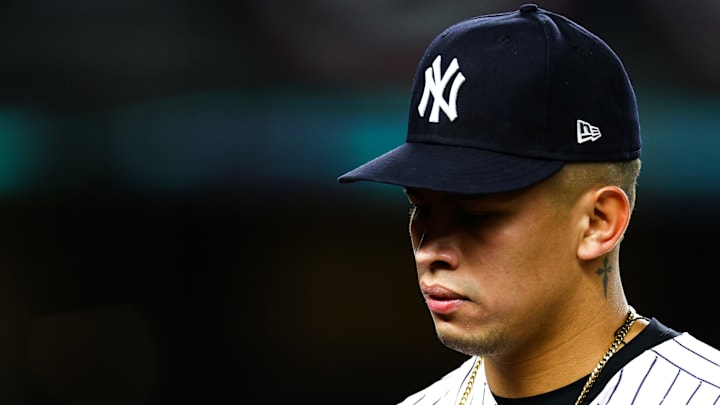In the interest of creating more action and getting back to '80s baseball a bit, MLB Commissioner Rob Manfred has mandated Zubaz -- nah, just kidding, he's imported a bunch of rule changes that range from "exciting" to "worrisome and granular".
Really? No third pickoff, but if you do try a third pickoff and you succeed, a third pickoff is good? It's a little bit "Dungeons and Dragons"-y. "Ooh, that's not allowed. Unless you rolled three sixes! Then you win."
Among Manfred's imports, the most significant are the pitch clock, which tested well in the minors but could mess with some vets' heads, and the shift ban, which could help Anthony Rizzo, but puts a new premium on athleticism at second base. After all, you can no longer station someone with below-average range deep in right field to corral hotshots. Your second baseman will now have to show quick-twitch athleticism to cover the hole.
Hopefully, he'll also be able to take advantage of that hole on offense to make up for it.
Yankees who could be hurt by new MLB rules (balk, pickoff, shift)
Jonathan Loaisiga, RHP
MLB's Statcast Pitch Tempo leaderboard isn't a be all, end all for determining which pitchers will struggle with the clock. As MLB does a very good job explaining, the clock starts when the pitcher receives the ball from the catcher and stops when he starts his delivery. The "Tempo" metric measures release to release, affected by the catcher's toss. It's naturally going to be longer than what the pitch clock picks up.
That said ... Loaisiga had the single worst Pitch Tempo in MLB last year, tying Gio Gallegos at 25.8 seconds. That means he'll be under the pitch clock's microscope, and won't be able to breathe, collect, gather and rev up before delivering another fastball. Hopefully, a change in the injury-prone Loaisiga's rhythm doesn't lead to excess wear and tear.
Frankie Montas, RHP
With runners on base, Montas is the 10th-slowest deliverer of the baseball in MLB, registering a "pitch clock equivalent" of 22 seconds. That's not going to fly.
Worse yet? Montas won't be able to practice the new rules until midsummer, when he's finally cleared for a throwing program after undergoing a shoulder scope. That means he'll be rushing to ramp up for the second half while also fundamentally altering the way he works. Rarely a good combo.
Silver lining? JP Sears, also quite slow, ranks 21st in the same metric. Thank goodness we traded that bum.
Yankees who are kind of stuck in the middle based on new MLB rules
Gleyber Torres, 2B
Gleyber Torres has been a somewhat below-average second baseman throughout his career, according to range metrics like Range Runs Above Average and UZR.
2022, however, represented a different story. His RngR was +4.0, marking his first ever season in the positives for preventing runs using his range at second. His UZR was also +4.1, another first time in the positives for Torres. His OAA and RAA were both 0, indicating his full profile didn't create any excess runs or outs or prevent any more than your average second baseman. According to Statcast, he saved three runs above average while moving laterally toward third, but clocked in at -1 when moving to his left toward first base. He'll have to be doing that much more often now that he can't be stationed deep in the outfield.
Maybe Torres turned a corner defensively in 2023 and won't be negatively impacted by the league's new statutes. Or maybe he'll struggle after finally getting the hang of things.
